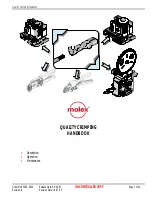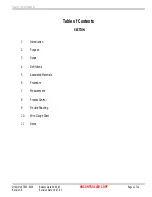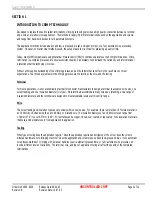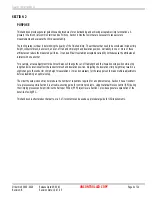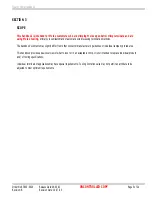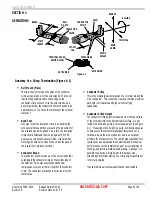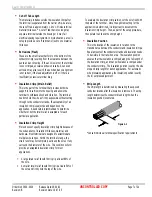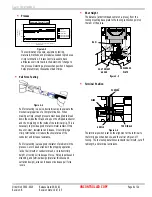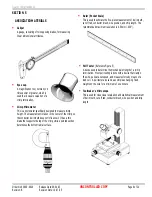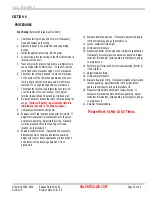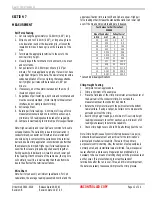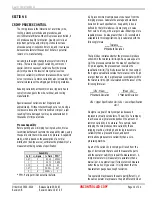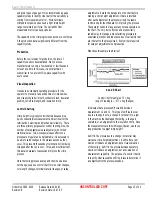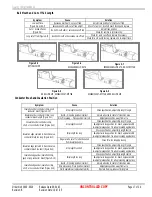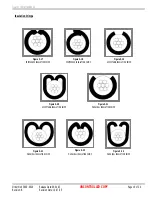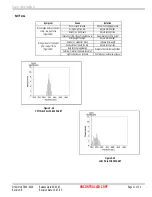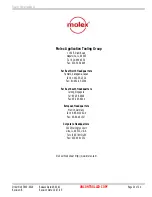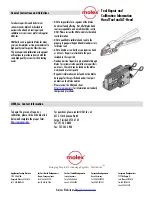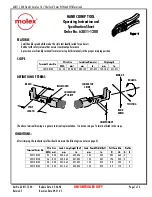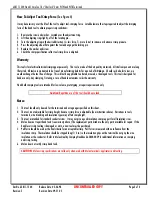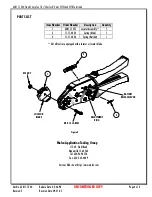
Quality Crimp Handbook
Order No 63800-0029
Release Date:09-04-03
UNCONTROLLED COPY
Page 15 of 24
Revision: B
Revision Date: 10-07-05
using two types of gauges. Molex recommends a gauge
capability study to identify what part of the variability is
coming from measurement error. Micro-terminals
crimped to small wire sizes need a tight crimp height
range to maintain pull force. The variability from
measurement error can keep CpKs low.
The capability of the crimping tools needs to be re-confirmed
if the production data is significantly different from the
capability study.
Production
Before the tool is ready for production, the level of
capability needs to be established. Many harness
manufacturers run only a few hundred or few thousand
wires at one time. In this case, it is not practical or
economical to run a twenty-five-piece capability with
every set-up.
Visual Inspection
It needs to be standard operating procedure for the
operator to manually fan each bundle of crimped wires
and visually check bell mouth, conductor brush, insulation
position, cut-off tab length, and insulation crimp.
Control Charting
Crimp height is typically control charted because it is a
quick nondestructive measurement and is critical for the
termination's electrical and mechanical reliability. There
are three primary purposes for control charting. One, the
number of setup samples is usually small, with limited
statistical value. Two, since special cause effects on a
process are irregular and unpredictable; it is necessary to
be able to catch changes in the process as soon as they
occur. This prevents thousands of terminations from being
scrapped after the run is over. Three, and most important,
this data is necessary to assess and improve the crimp
process.
Once the tooling process is setup and the wire size does
not change, keep one control chart for wire color changes,
wire length changes, terminal material changes, or setup
adjustments. Record the data point on the chart before
making a crimp height adjustment. If data is recorded
after each adjustment, the process is likely to assume
control and provide little data for improving the process.
The operator needs to make as many notes as possible on
the chart. The only truly effective and economically
sensible way to manage a manufacturing process is to
understand, monitor and reduce sources of variability that
are inherent to the process itself. Every minute required
for setup or adjustments is unproductive.
What does this sample chart tell us?
X and R Chart
Control limit for sample of 5 = Avg
(Avg of 5readings) + .577 x Avg (Ranges)
It indicates that a process shift occurred between
measurement 12 and 13. This type of shift could occur
due to a change in wire, a change in terminal lots, a jam
in the machine that damaged the tooling, a change in
operators, or an adjustment to the insulation crimp. Since
the measurements are still within specification, would you
stop production to adjust crimp height?
A shift in the process due to a change in material may
warrant a crimp height adjustment. A shift after a jam
would not indicate an adjustment, but a close evaluation
of the tooling. A shift in the process between operators
would not indicate an adjustment, but an evaluation of
measurement capability. The purpose of a control chart is
to identify what caused the shift in process to determine if
an adjustment to the process is needed.

